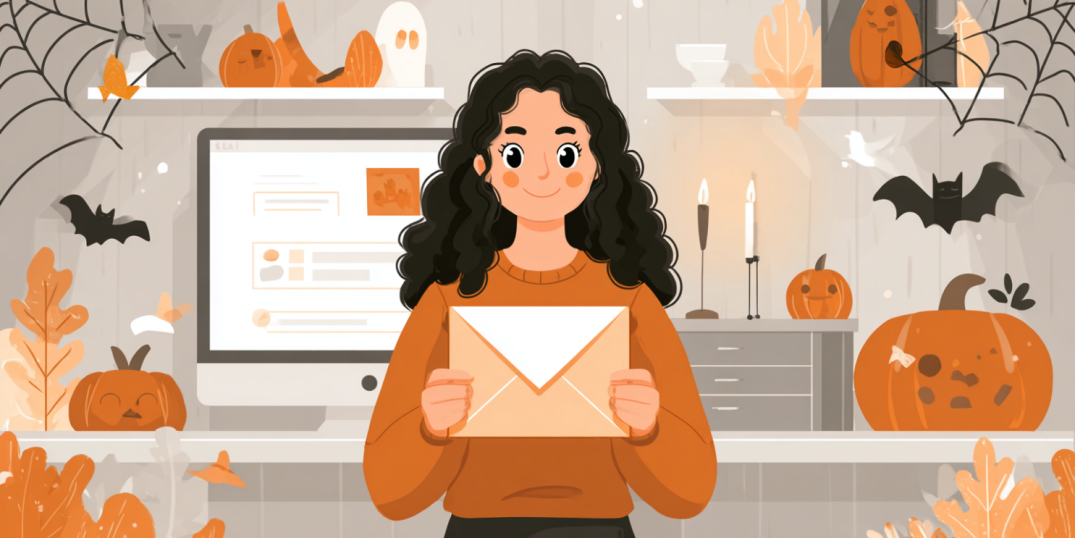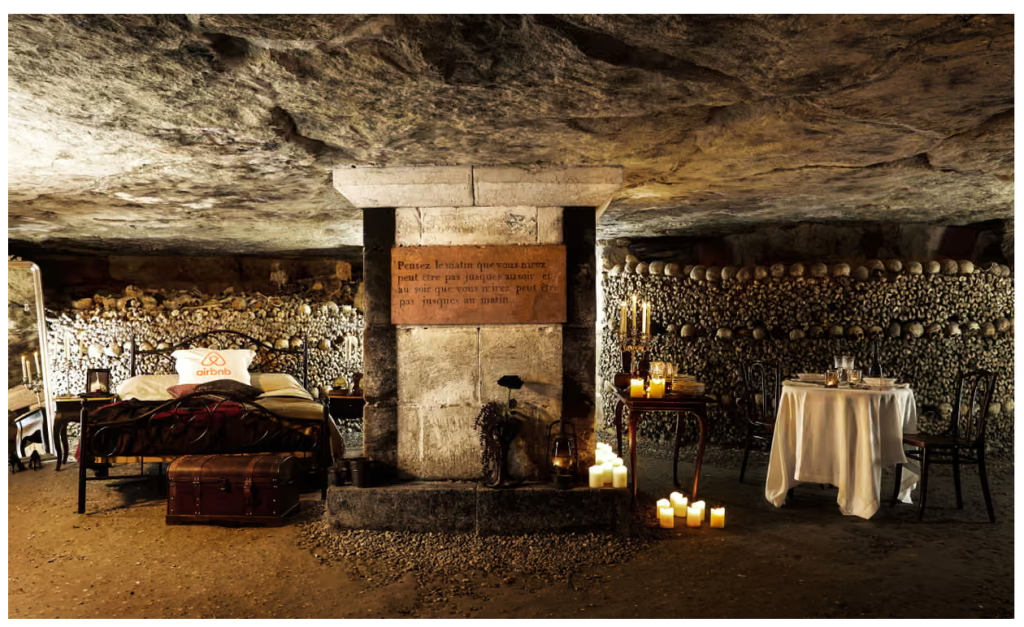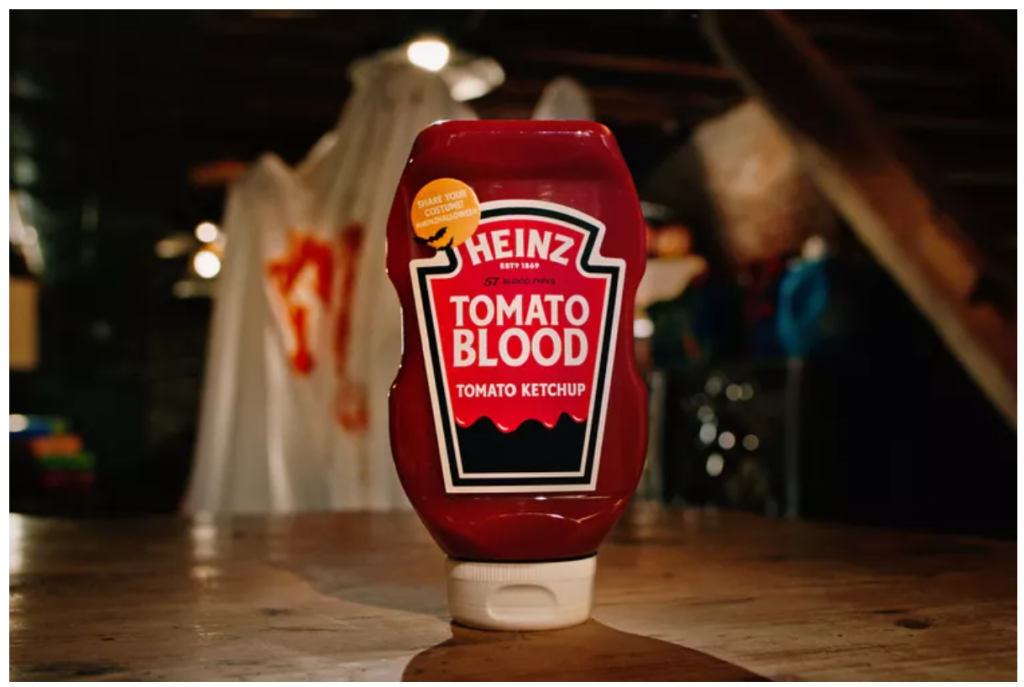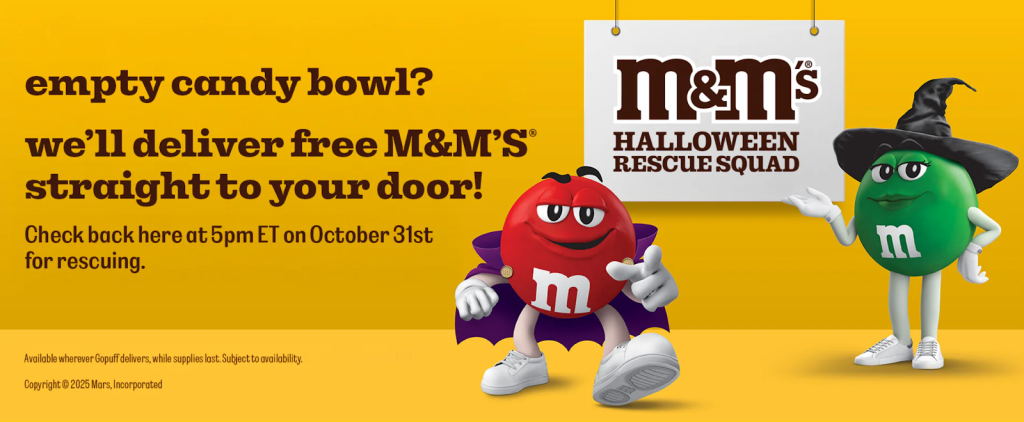- Home
- Friday Column
- Epic Halloween Campaigns That ...

It’s easy to think that a good Halloween campaign begins and ends with a pumpkin emoji, a few spooky fonts, and some autumn colors spread across your emails and social media posts. And yes—that’s a nice touch and a perfectly good starting point.
But some brands go further than that. They don’t just decorate their content for Halloween—they transform it. These are the campaigns that take the holiday spirit and turn it into something experiential, something that lingers in people’s minds long after the jack-o’-lanterns are gone.
In this article, we will show you the best Halloween marketing campaigns and what you can learn from them for your own business. A strong campaign is more than just a fancy-worded email: it takes the holiday spirit and drafts a strong and positive experience for your clients and readers. Don’t get spooked by how complex that sounds, as we will break down for you the best Halloween ideas for any business.
Campaign #1: Airbnb’s Night in the Paris Catacombs
When it comes to creating an unforgettable Halloween campaign, only a few brands could compete with what Airbnb did in 2015. The company managed to merge storytelling, suspense, and brand identity into a truly immersive experience.
To celebrate Halloween, the platform launched a contest that offered two lucky winners a once-in-a-lifetime opportunity to spend a night in the Paris Catacombs. And while spending a night in a labyrinth filled with the bones of more than six million souls might not sound like everyone’s idea of fun, it perfectly captured the spirit of Halloween—it was creepy, cinematic, and pure genius.

👉 The marketing magic behind the bones
This was one of those Halloween marketing campaigns that didn’t rely on a flashy Halloween ad or a few spooky social media posts. Instead, it offered a fully immersive experience that people wanted to live, talk about, and remember long after the holiday passed.
The campaign used email to pull audiences deeper into the story. Storytelling subject lines created a cinematic tone—like “Dare to spend Halloween underground?”—while the teaser → entry → winner confirmation → non-winner follow-up sequence kept excitement alive for weeks. Each email played with curiosity and exclusivity, turning subscribers into active participants rather than passive readers.
👉 Why it worked
The contest made global headlines and drove enormous organic reach—without relying on traditional Halloween advertising budgets. By framing itself as the ultimate host of unique experiences, Airbnb reminded the world that it sells stories, not just stays. The emotional engagement outlived the campaign itself and earned Airbnb a spot among the best Halloween campaigns of the decade.
👉 What email marketers can learn
The takeaway from this campaign is simple: think outside the box. Visuals and gimmicks can help set the mood, but they will never beat real experiences and powerful storytelling. That’s what can transform your Halloween content into something people genuinely want to share.
It’s what allows your brand to stand out in the crowd of other spooky social media posts and emails. And while not every company can pull off something on the scale of Airbnb, there are plenty of ways to create real-life experiences on a smaller level. If you align them with your brand’s identity, they’ll be remembered far longer than any social media post.
Campaign #2: Heinz “Tomato Blood” Ketchup
Every Halloween season, some brands just get it—and Heinz is one of them. With its “Tomato Blood” campaign, the company managed to turn an everyday product into a Halloween must-have. What was once an ordinary bottle of ketchup suddenly became a symbol of the spooky season, rebranded as “Tomato Blood.”
It was a simple idea yet executed so cleverly that it felt completely fresh. The familiar red condiment was now part of the costume, part of the party, part of the Halloween story. Whether you were decorating cupcakes, designing your vampire look, or pranking your friends, Heinz gave you the perfect prop.

👉 The secret sauce behind the campaign
At first, Heinz simply released its classic ketchup in a new bottle labeled “Tomato Blood.” But soon, the brand leaned into the fun and encouraged fans to use the ketchup not just as food, but as fake blood for their Halloween costumes. The trend caught on quickly, and later on Heinz went even further by launching a special “Heinz Tomato Blood Costume Kit,” which included makeup tools, brushes, vampire teeth, and, of course, a bottle of ketchup to help people create their own looks.

👉 Why it worked
The “Tomato Blood” concept gave Heinz something most Halloween brands can only dream of—a seasonal identity built from a product people already know by heart. The campaign boosted sales, generated a flood of user-generated content under the #TomatoBlood and #HeinzHalloween hashtags, and reminded everyone that creativity doesn’t have to come from new products—sometimes it’s about seeing the old ones in a new light.
👉 What email marketers can learn
If you’re planning your own Halloween campaign, take a page from Heinz’s playbook. Instead of launching all in one piece, think in stages and diversify your spooky products. Do not aim for the loudest campaign, but rather make it memorable. As Heinz proved, with a little imagination, even such a basic product as ketchup can steal the spotlight.
Campaign #3: M&M’s Halloween Rescue Squad
Some Halloween campaigns are built around fear, others around fun. M&M’s decided to go for something entirely different: helpfulness. The brand’s Halloween Rescue Squad, launched in partnership with GoPuff, became the savior of the night for anyone who ran out of candy too soon.
On October 31, starting in the afternoon, people in some U.S. cities could request an emergency refill of Mars candy delivered right to their door in about half an hour. In the chaos of trick-or-treating, when the doorbell won’t stop ringing and your candy bowl suddenly looks suspiciously empty, M&M’s showed up as the brand that gets it. It was a very practical—and surprisingly charming—approach to Halloween.

👉 The marketing magic behind the rescue
This was one of those Halloween marketing campaigns that chose a less traditional angle: it stepped into real life, right where people actually needed help. The campaign was promoted through digital channels and a special microsite where users could check if their area was covered and request their sweet rescue once the service went live.
👉 Why it worked
The Halloween Rescue Squad transformed a small logistical idea into a meaningful brand gesture. It showed that Halloween advertising doesn’t always have to be loud or eerie—sometimes it can simply be kind. By responding to an actual Halloween scenario, M&M’s positioned itself as a brand that’s present, modern, and genuinely in tune with people’s lives.
The campaign sparked social buzz, was covered by major media outlets, and reminded everyone that a smart idea doesn’t have to be complex. All it takes is understanding the moment—and showing up at the right one.

👉 What email marketers can learn
The real lesson here lies in responsiveness. Great Halloween campaigns don’t always have to create new worlds—sometimes they just need to appear at the perfect time. When your brand acts quickly and feels human, you don’t need elaborate storytelling or fear-based hooks. You just need presence, empathy, and timing.
Lessons & Best Practices
✨ Storytelling (Airbnb)
Airbnb showed how a Halloween campaign can go far beyond decoration and proved that it can tell a story. Their cinematic approach made people feel and dream at the same time. They managed to build emotional connection with storytelling and replaced ordinary announcements with experiences readers want to follow.
✨ Seasonal scarcity & reinvention (Heinz)
Heinz showed that a strong Halloween campaign doesn’t always require a new product—sometimes it’s about seeing what you already have through a different lens. Offering a few playful variations instead of a single product kept the excitement alive and gave customers a reason to come back throughout the season. For email marketers, this is a reminder that seasonal reinvention—paired with a limited-time feel—can turn even the most ordinary product into a Halloween favorite.
✨ Real-time urgency (M&M’s)
M&M’s reminded us that the best campaigns sometimes happen in real time. Their Halloween Rescue Squad worked because it solved an immediate need right when it mattered, proving that urgency-driven actions can turn ordinary engagement into real excitement.
💡 Practical tips for email marketers
- Use storytelling subject lines to spark curiosity instead of announcing promotions directly.
- Build a seasonal rhythm: tease early, launch big, and follow up with scarcity-driven reminders.
- Keep a “real-time” mindset by planning for spontaneous sends when trends or moments arise.
- Design emails that invite participation (polls, small challenges, or experiences) rather than just inform. Use pre-designed email templates to make it easier.
- Align your seasonal tone with your brand identity—not every Halloween campaign needs to be spooky; it just needs to be memorable.
To Sum Up
The biggest lesson from all these examples is probably this: a seasonal email campaign—whether for Halloween or any other holiday—is never just a one-shot effort. It’s a strategic endeavor built on a bigger vision. Of course, with ketchup already resembling blood and M&M’s being an essential part of Halloween candy bowls, those two brands had it fairly easy when it came to coming up with fun Halloween advertising ideas.
But that doesn’t mean others can’t do the same. Every skilled email marketer can find a clever way to turn the simple idea of trick or treat into a campaign that captures attention, sparks emotion, and drives engagement. It’s all about creativity—and knowing how to play with the season.



